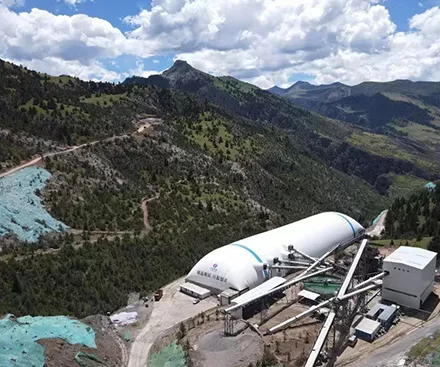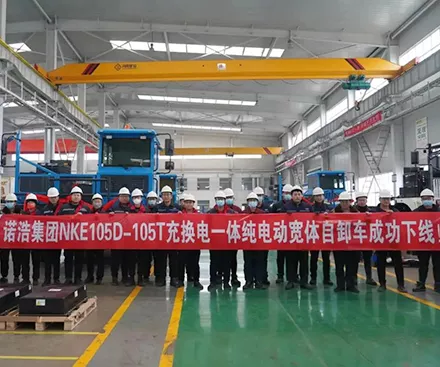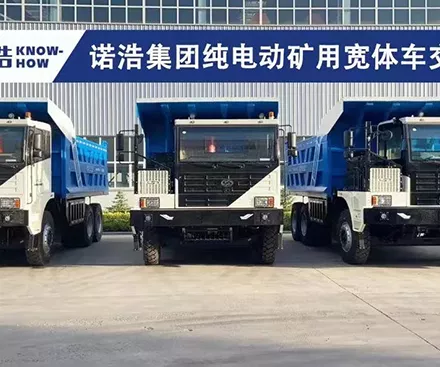Dump trucks, an essential part of construction, mining, and transportation industries, are designed to efficiently transport and unload various materials, from aggregates and soil to debris and waste. The load capacity of a dump truck is a crucial factor that influences its utility in different applications. This capacity varies widely among different types and sizes of dump trucks, each tailored to specific job requirements. In this comprehensive overview, we'll delve into the factors affecting dump truck load capacity, the different types of dump trucks, and the considerations involved in determining the optimal load for these heavy-duty vehicles.
Whether you're a fleet manager, a dealer, or a mine owner, the capacity of your dump truck plays a crucial role in determining the efficiency and profitability of your operations. This comprehensive guide will delve into the factors that influence dump truck capacity, providing you with the knowledge you need to make informed decisions about your fleet.
The load capacity of your dump truck is influenced by a combination of factors such as vehicle type, body design, material density, axle configuration, and legal weight limits.
- Standard Dump Trucks: These are the most common type of dump trucks and are characterized by a simple truck chassis with a dump body mounted to the frame. Load capacities for standard dump trucks typically range from 10 to 20 cubic yards, although larger variants exist for specialized applications.
- Articulated Dump Trucks: Also known as ADTs, these trucks have a hinge between the cab and the dump box, allowing for better maneuverability on rough terrains. Articulated dump trucks can handle loads ranging from 25 to 40 tons or more, making them suitable for large-scale construction and mining projects.
- Straight or Square Body: Commonly found in standard dump trucks, these bodies have a straightforward design with vertical sides and a flat base. They are well-suited for hauling loose materials like sand, gravel, and topsoil.
- Tapered Body: Some dump truck bodies have tapered designs with sloping sides. This design is often used for hauling cohesive materials like clay or for improving stability during transport.
Calculations
Measure the width of the truck bed, from the inside of one wall to the inside of the other wall. Write this number down in feet to make the calculations easier. Assuming your truck bed is 63 inches wide, you can write it as 5.25 feet.
Measure the length Draw the shape of the bed in the same way and record its shape in feet.
Measure the height Start at the bottom of the bed and extend to the top or side of the tailgate (whichever is lower).
At this point, you should have three numbers for the width, length, and height of the bed. Multiply them all together to determine the capacity. For a truck bed that is 14 feet long, 6 feet wide, and 5 feet tall, you would calculate 14 x 6 x 5 = 420. This number is the capacity of the truck bed in cubic feet.
One cubic yard equals 27 cubic feet, so to calculate the cubic yardage, you need to divide the previous number and multiply it by 27. Using the example of a 420 cubic foot truck above, we can calculate 420 ÷ 27 = 15.56 cubic yards.
- The weight of the materials being transported significantly impacts the load capacity. Lighter materials, such as mulch or wood chips, may fill the truck bed without reaching its weight capacity, while denser materials, like rocks or concrete, may quickly approach the limit.
- The number and arrangement of axles influence a dump truck's weight distribution and, consequently, its load capacity. Tandem axle dump trucks are common and can handle substantial loads, while tri-axle and quad-axle configurations offer even higher weight capacities.
- Dump trucks must comply with legal weight limits imposed by transportation authorities. These limits consider the gross vehicle weight (GVW), which includes the weight of the truck, its payload, and any additional equipment. Exceeding these limits can result in fines and penalties.
By understanding these factors, you can optimize the load capacity of your dump truck, leading to increased efficiency and profitability.
Different types of dump trucks have different load capacities. From small dump trucks to standard and articulated dump trucks, each has its unique specifications and capacities.
- Small dump trucks, often used in landscaping and residential construction, typically have load capacities ranging from 1 to 6 cubic yards. These trucks are maneuverable and well-suited for jobs with limited space.
- Medium-sized dump trucks are versatile and find applications in construction, road maintenance, and smaller mining operations. Load capacities for these trucks typically range from 10 to 20 cubic yards.
- Large dump trucks are heavy-duty vehicles designed for major construction projects, mining, and quarry operations. These trucks can have load capacities exceeding 20 cubic yards, with some specialized models capable of carrying up to 400 tons or more.
Knowing the exact load capacity of different types of dump trucks can help you make informed decisions and get the most out of your investment
Whether it's a small medium-sized or large dump truck, KNOWHOW's mining dump trucks are known for their excellent work efficiency, ensuring that your work is more efficient and smoother through advanced technology and a reliable and powerful design.
Determining the load capacity of a dump truck involves considerations such as the density of the material being transported and the terrain where the truck will be operating.
- Different materials have varying densities and weights. Understanding the specific gravity and weight of the material being transported is essential for determining the optimal load capacity without exceeding weight limits.
- The terrain over which the dump truck will operate affects its stability and maneuverability. Rough or uneven terrain may require a lower load capacity to ensure safe operation.
- The design of the dumping mechanism influences how efficiently materials can be unloaded. The angle and height to which the bed can be raised impact the ease of dumping, especially in confined spaces.
- Dump truck operators must adhere to local, state, and federal weight regulations. Exceeding legal weight limits not only results in penalties but also poses safety risks and may lead to premature wear on the truck's components.
- The nature of the job at hand, whether it's hauling soil from an excavation site or transporting aggregates for a construction project, dictates the required load capacity. Understanding the project's demands ensures that the dump truck is appropriately sized for the task.
With a clear understanding of dump truck load capacity, you can ensure your dump truck is always operating at its optimal load capacity, no matter the conditions.
Explore the topic of how many tons can a dump truck haul and learn how many tons they can carry, their limitations, and factors that impact their load capacity.
The amount you can carry depends on how many cubic yards and truck weight are in a dump truck. Learn more about dump truck carrying capacities with KNOWHOW Group!
If you’re going to transport gravel, mulch, or other materials in a dump truck, it’s essential to know exactly how much the truck can carry. In the following guide, we’ll discuss how you determine a dump truck’s capacity in cubic yards
The load capacity of a dump truck is a critical factor that influences its effectiveness in various industries. Understanding the factors that affect load capacity, such as the type of truck, dump body design, material density, and regulatory requirements, is essential for selecting the right equipment for a given job. Whether it's a small dump truck for residential landscaping or a massive hauler for mining operations, the proper assessment of load capacity ensures efficiency, safety, and compliance with regulations. As technology and design continue to advance, dump trucks will likely evolve to meet the growing demands of industries that rely on these robust vehicles for the transportation of materials essential to construction, infrastructure development, and resource extraction.
Now that you’ve gained a comprehensive understanding of dump truck load capacity, it’s time to put this knowledge into action. Whether you’re a fleet manager, a dealer, or a mine owner, understanding the capacity of your dump truck can significantly enhance your operations’ efficiency and profitability.
We invite you to reach out to our team for more information on our range of dump trucks and their capacities. Our experts are ready to assist you in selecting the dump truck that best suits your needs, ensuring you get the most out of your investment.
Don’t wait, act now! Contact us today and let us help you optimize your operations with the right dump truck capacity

Jul. 23, 2022
View More
Jun. 15, 2022
View More
Jun. 01, 2022
View More